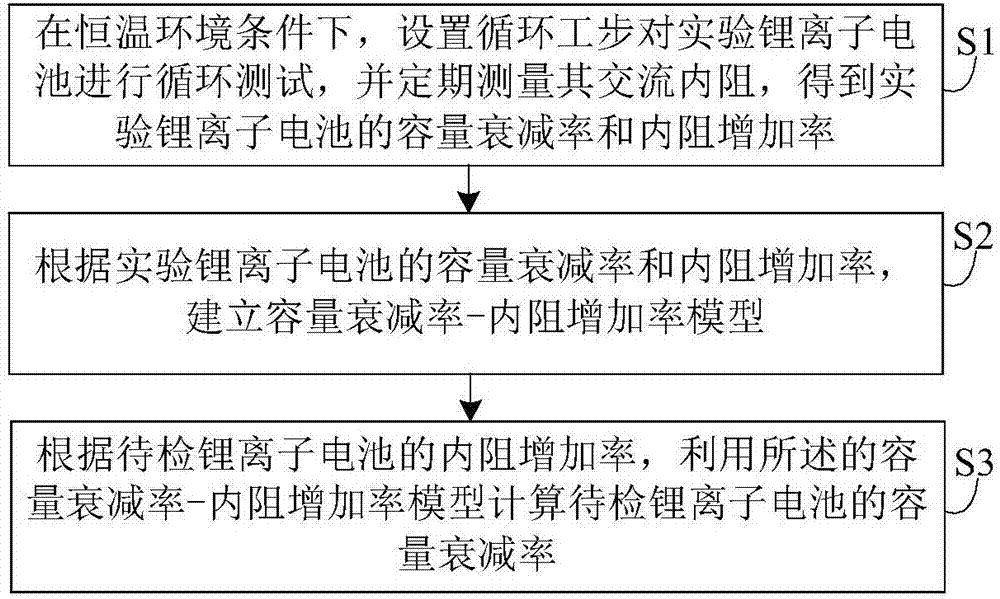Lithium battery capacity fading rate calculating method
A technology of capacity decay rate and calculation method, applied in the field of capacity decay rate calculation of lithium-ion batteries, can solve the problems of large use limitations, unclear meaning, and the model is not universal, and achieves high practicability and universality. strong effect
- Summary
- Abstract
- Description
- Claims
- Application Information
AI Technical Summary
Problems solved by technology
Method used
Image
Examples
Embodiment Construction
[0012] Combine below figure 1 Shown, the present invention is described in further detail.
[0013] Such as figure 1 As shown, this embodiment discloses a method for calculating the capacity decay rate of a lithium-ion battery, including the following steps S1 to S3:
[0014] S1. Under the condition of constant temperature environment, set a cycle step to test the experimental lithium-ion battery in a cycle, and measure its AC internal resistance regularly to obtain the capacity decay rate and internal resistance increase rate of the experimental lithium-ion battery;
[0015] S2, according to the capacity decay rate and the internal resistance increase rate of the experimental lithium-ion battery, establish a capacity decay rate-internal resistance increase rate model;
[0016] S3. According to the internal resistance increase rate of the lithium-ion battery to be tested, the capacity decay rate-internal resistance increase rate model is used to calculate the capacity decay ...
PUM
 Login to View More
Login to View More Abstract
Description
Claims
Application Information
 Login to View More
Login to View More - R&D
- Intellectual Property
- Life Sciences
- Materials
- Tech Scout
- Unparalleled Data Quality
- Higher Quality Content
- 60% Fewer Hallucinations
Browse by: Latest US Patents, China's latest patents, Technical Efficacy Thesaurus, Application Domain, Technology Topic, Popular Technical Reports.
© 2025 PatSnap. All rights reserved.Legal|Privacy policy|Modern Slavery Act Transparency Statement|Sitemap|About US| Contact US: help@patsnap.com

